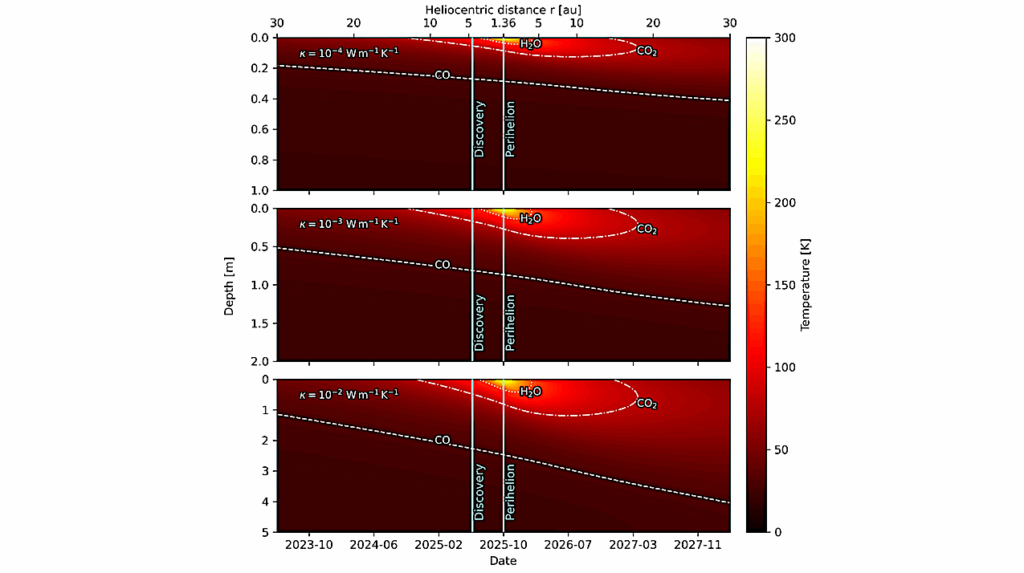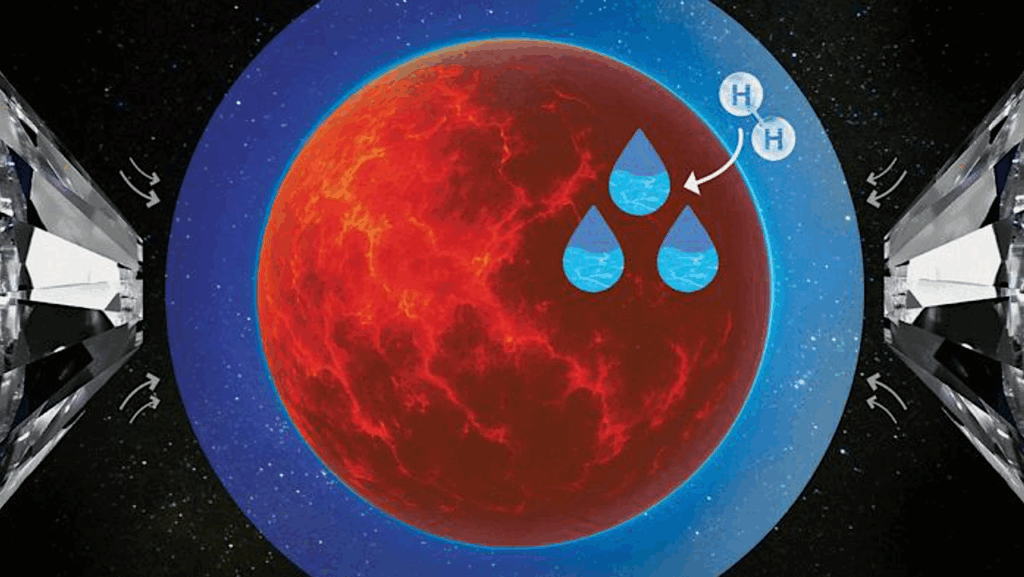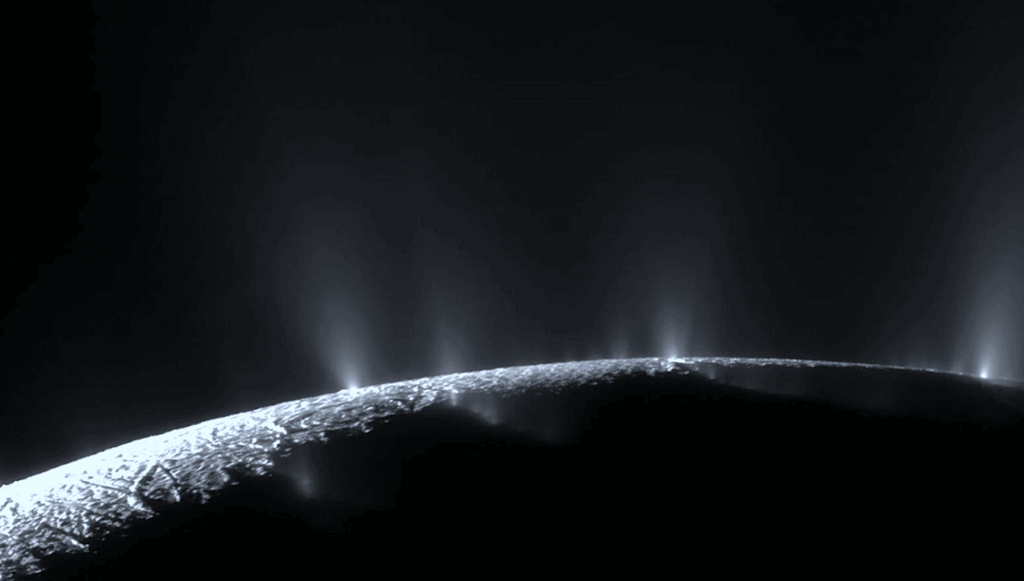Fats Provide Clues To Life At Its Limits In The Deep Sea

In their study, first author Palash Kumawat of the Geosciences Department at the University of Bremen and his colleagues used lipid biomarker analyses to decipher the survival strategies of the microbes in this harsh ecosystem. The high pH value of 12 here is especially challenging for deep-sea life; This is one of the highest known value so far in ecosystems.
In order to detect life at all, the researchers had to resort to special methods of trace analysis. In this situation, the detection of DNA can be ineffectual where there is a low number of living cells. “But we were able to detect fats,” says first author Palash Kumawat, who is presently a PhD candidate in the Geosciences Department. “With the help of these biomarkers we were able to obtain insights into the survival strategies of methane- and sulfate-metabolizing microbes in this extreme environment.”
Microbial communities metabolize carbon in the deep sea and thereby contribute to the global carbon cycle. However, the communities that the team describe in the publication draws its energy from minerals within rocks and gases such as carbon dioxide and hydrogen to produce methane, for example, an important greenhouse gas. These processes initially take place independently of the ocean above.
The lipids also provide clues to the age of the microorganisms. If the cellular biomolecules are intact, they represent a living or recently dead community. If they are not intact, they are geomolecules, which means that they are fossil communities from the past.
According to Kumawat, the combination of isotopes and the lipid biomarkers indicates that multiple microbial communities now live in this inhospitable habitat and have lived there in the past. “This distinction helps us when working in areas with extremely low biomass and nutrient deficiency.”
IMAGE
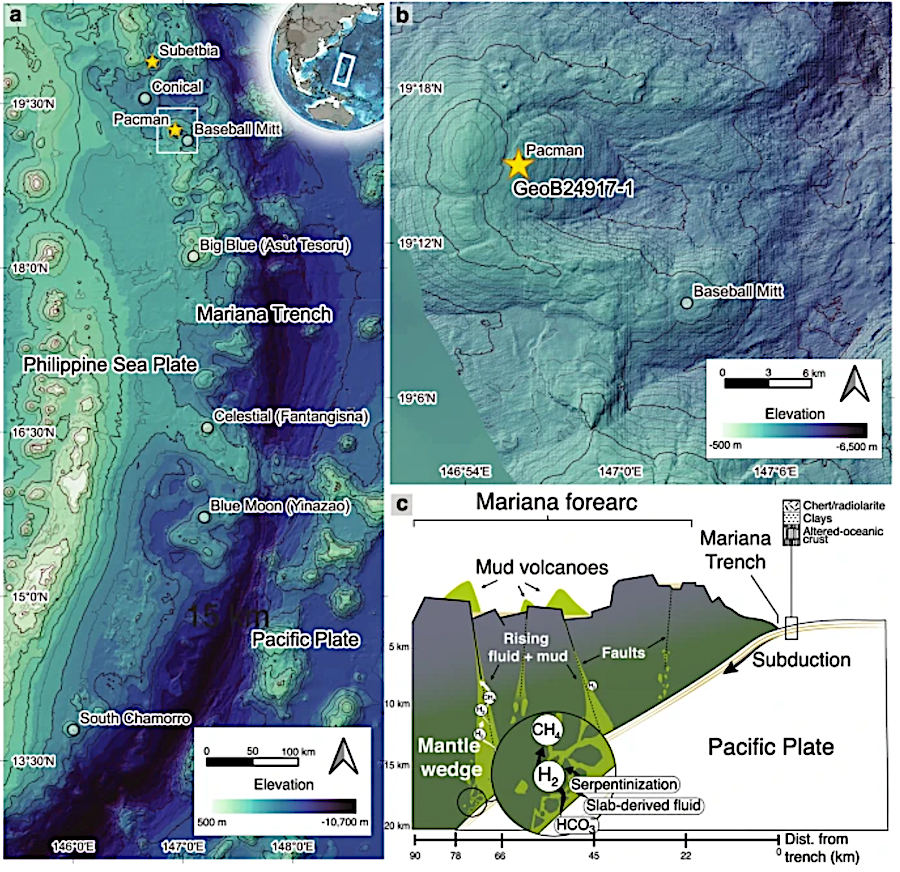
a Bathymetry map of the Mariana subduction system showing the incoming Pacific Plate, the overriding Philippine Sea Plate, the Mariana Trench, and a subset of the known serpentinite mud volcanoes on the forearc seafloor. Stars mark the locations of the Pacman and Subetbia mud volcanoes investigated in this study. Bathymetry from GEBCO Compilation Group125. b Bathymetry map showing the Pacman mud volcano and the location of gravity core GeoB24917-1 retrieved during expedition SO292/2. Bathymetric data collected during expedition SO292/226. c Schematic of serpentinite mud volcano formation, following serpentinization of the mantle wedge by slab-derived fluids, formation of H2 and CH4, and the rise of serpentinite mud and fluids through deep-seated faults towards the seafloor. — Communications Earth & Environment
Dr. Florence Schubotz, organic geochemist at MARUM – Center for Marine Environmental Sciences at the University of Bremen and co-author of the study, adds: “What is fascinating about these findings is that life under these extreme conditions, such as high pH and low organic carbon concentrations is even possible. Until now, the presence of methane-producing microorganisms in this system has been presumed, but could not be directly confirmed. Furthermore, it is simply exciting to obtain insights into such a microbial habitat because we suspect that primordial life could have originated at precisely such sites.”
The samples for the study come from a sediment core that was retrieved by the Research Vessel Sonne in 2022 during Expedition SO 292/2. Not only were the scientists able to discover the previously unknown mud volcanoes of the Mariana forearc during this cruise, but also to sample them.
The samples were obtained as part of the Cluster of Excellence “The Ocean Floor – Earth’s Uncharted Interface.” Palash Kumawat and his colleagues are now planning to cultivate organisms in an incubator to find out more about their nutrient preferences in inhospitable environments.
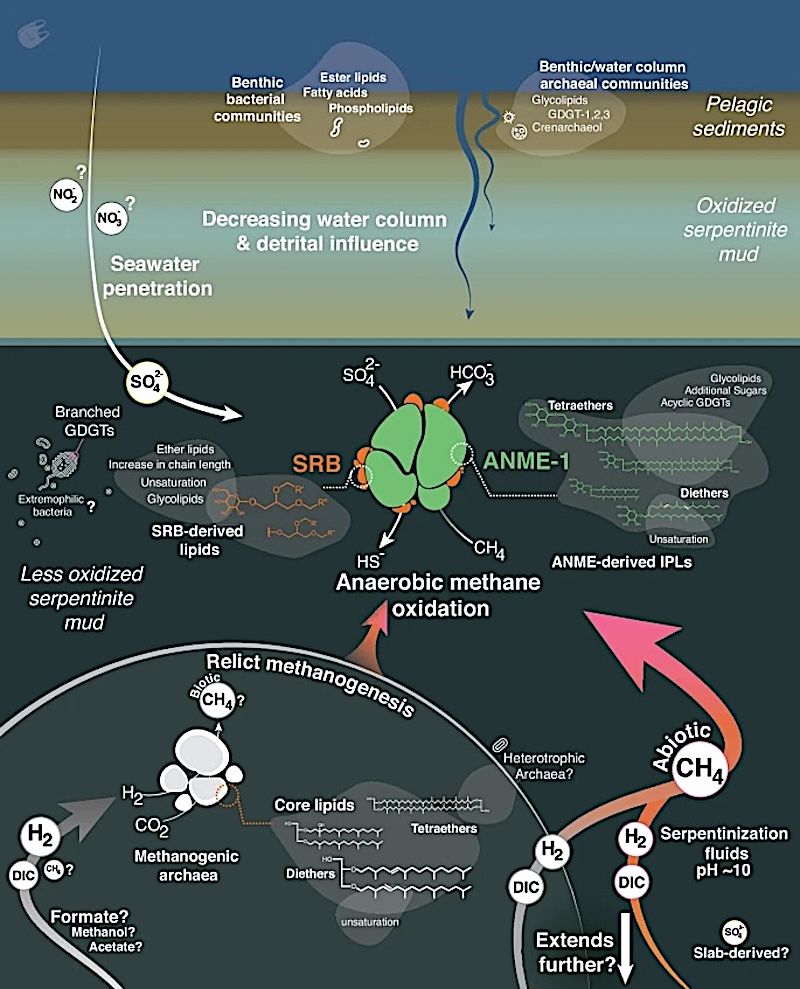
This schematic depicts lipid biomarker transitions from pelagic sediment communities to extremophiles adapted to high pH and redox conditions in serpentinite mud. The Mariana forearc biosphere is fueled by alkaline serpentinization fluids enriched in H2, CH4, DIC, and organic acids, sustaining specialized microbial communities. Lipid and stable carbon isotope data reveal a shift from relict methanogenic archaea, likely engaged in hydrogenotrophic methanogenesis, to a later ANME-SRB community mediating anaerobic oxidation of methane (AOM). Changes in substrate availability likely drove this transition. Distinct lipid signatures, including unsaturated diethers, acyclic GDGTs, and ether-based glycolipids, highlight adaptations to pH stress, phosphate limitation, and fluctuating redox conditions. The presence of in-situ branched GDGTs suggests previously uncharacterized bacterial communities persisting in these ultra-oligotrophic conditions. The Mariana forearc serpentinite biosphere, shaped by episodic fluid flow and substrate shifts, provides insights into deep-sea subsurface habitability. DIC = dissolved inorganic carbon, ANME anaerobic methanotrophic archaea, SRB sulfate-reducing bacteria, AOM anaerobic oxidation of methane, GDGT glycerol dialkyl glycerol tetraether. — Communications Earth & Environment
MARUM produces fundamental scientific knowledge about the role of the ocean and the seafloor in the total Earth system. The dynamics of the oceans and the seabed significantly impact the entire Earth system through the interaction of geological, physical, biological and chemical processes. These influence both the climate and the global carbon cycle, resulting in the creation of unique biological systems. MARUM is committed to fundamental and unbiased research in the interests of society, the marine environment, and in accordance with the sustainability goals of the United Nations. It publishes its quality-assured scientific data to make it publicly available. MARUM informs the public about new discoveries in the marine environment and provides practical knowledge through its dialogue with society. MARUM cooperation with companies and industrial partners is carried out in accordance with its goal of protecting the marine environment.
Biomarker evidence of a serpentinite chemosynthetic biosphere at the Mariana forearc, Communications Earth & Environment (open access)
Astrobiology, oceanography,


